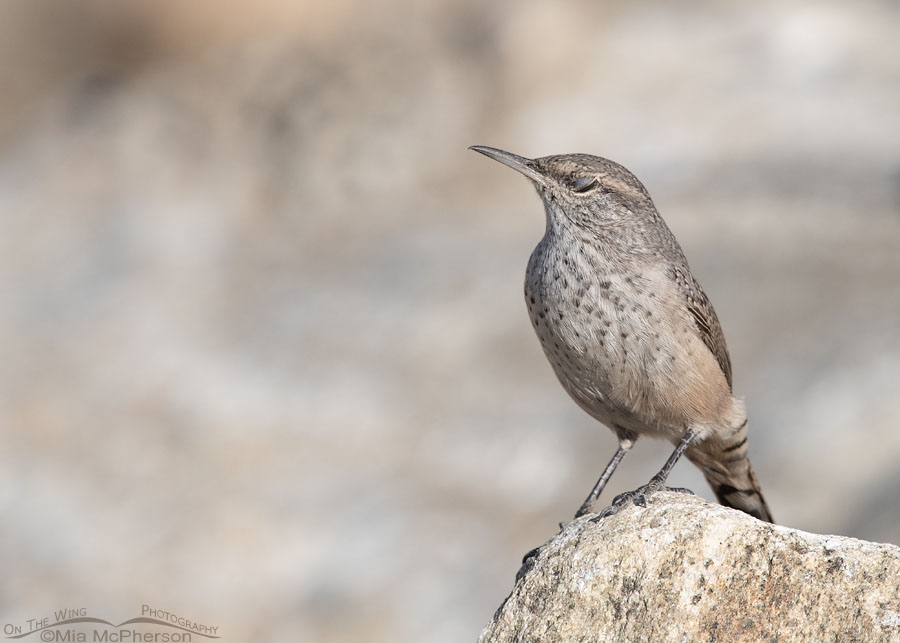It was exactly one year ago today when I photographed this blinking Rock Wren at Farmington Bay WMA. I was surprised to find this wren in a wetland habitat.
 Blinking Rock Wren at Farmington Bay WMA – Nikon D500, f7.1, 1/2500, ISO 500, Nikkor 500mm VR with 1.4x TC, natural light
Blinking Rock Wren at Farmington Bay WMA – Nikon D500, f7.1, 1/2500, ISO 500, Nikkor 500mm VR with 1.4x TC, natural light
Rock Wrens are known for their preference for dry, rocky habitats such as cliffs, canyons, and rocky outcrops. They are well adapted to these environments, where they use crevices and rocky formations for nesting and foraging.
Finding a Rock Wren in a wetland or marshy habitat would be considered unusual and surprising due to their strong association with dry, rocky environments.
However, during certain times of the year, some Rock Wrens do migrate. During fall migration, I have found Rock Wrens in marshy habitats.
Was this Rock Wren winking or blinking?
I’m fairly certain the Rock Wren was blinking. Blinking is an action that can be done to clear the eyes of dust or debris. I do that a lot. Birds blink too.
Serendipity
When I stopped to photograph the Rock Wren, I had no idea that I would also get to photograph a Long-tailed Weasel I spotted on the same boulders the wren was perched on. That was a touch of serendipity! Read more about my experience that day here.
Bending the rules a bit
Typically, I prefer to maintain eye contact with my subjects in my images. In this photo, I don’t have that. What I do show in this photo is what the eyelid of a blinking Rock Wren looks like, and I find that interesting.
I’m always looking for something ‘different’ in the photos I take of my subjects. This one caught my eye because the wren was blinking.
Life is good.
Mia
Click here to see more of my Rock Wren photos plus facts and information about this species.


A subtle charmer.
I have noted that Carolina Wrens often close their nictitating membrane when singing. Boat-tailed grackles seem to do this as part of their aggressive displays. I tended to toss out these photos as “bad” distractions.